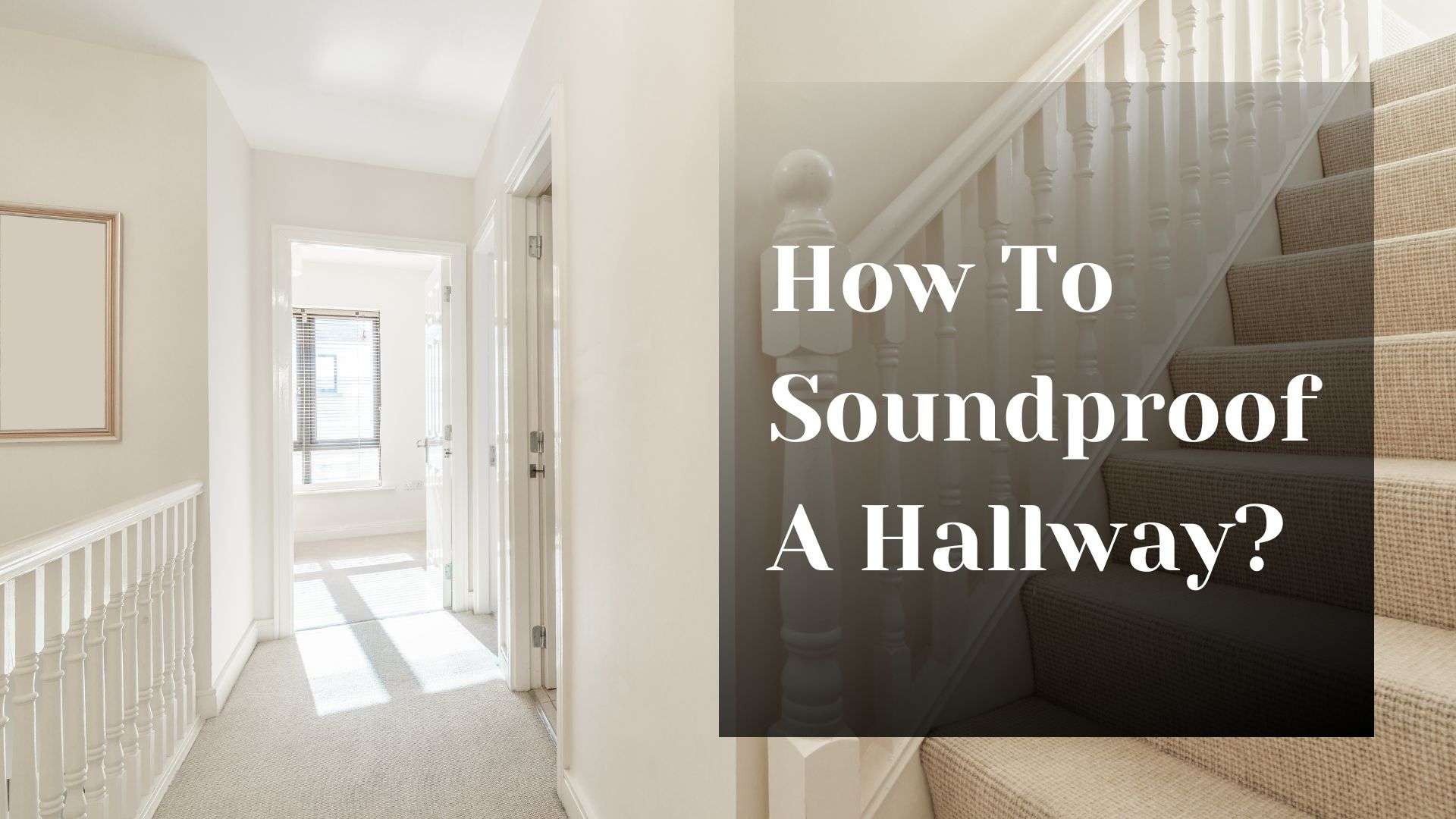Soundproofing Solutions for Schools
To address the negative impact of noise on student learning, soundproofing measures can be implemented to create a more conducive learning environment. Here are some effective solutions:
Soundproofing Floors and Ceilings
Taking into account the floors and ceilings when thinking about soundproofing solutions for schools is essential to establishing the best possible learning environment.
Activities in the classroom might be seriously disrupted by outside noises like traffic noise or construction activity.
Putting in soundproofing materials for floors and ceilings becomes a crucial first step in reducing these disruptions.
An effective barrier against the penetration of outside noise is created by acoustic panels, ceiling tiles, and floor underlayments.
These materials are intended to absorb and attenuate sound waves. This improves the general comfort and wellbeing of the learning environment in addition to creating a quieter area that encourages student participation and focus.
Next To Read: How to Reduce Noise in Your Basement Ceiling?
To optimize these materials’ ability to create an environment that is really insulated, careful selection and installation are essential.
HVAC Systems That Are Silent
The HVAC systems heating, ventilation, and air conditioning are essential to keeping schools’ interior spaces comfortable.
However, these devices have the potential to introduce ambient noise that disrupts the learning environment if they are not properly maintained or built.
Choosing HVAC systems with lower noise levels or adding technologies that reduce noise is a smart way to deal with this issue.
This entails using vibration isolation techniques, installing sound-absorbing materials in ducts, and choosing HVAC equipment with lower decibel ratings.
A more tranquil and comfortable learning atmosphere for pupils is guaranteed by a quieter HVAC system, which also enhances the quality of the teaching and learning process.
The HVAC system must have proper maintenance and routine inspections to maintain its noise-reducing qualities over time.
Weather stripping and door seals
Doors have a big impact on the acoustic environment in a school, although being underappreciated in their contribution to noise transmission.
To solve this problem, installing weather stripping and door seals is a sensible and affordable option.
These materials function as a barrier against sound leakage by sealing doors tightly.
Keeping the classroom calm is essential for students’ focus and academic achievement during key events like exams or concentrated study sessions.
Weather stripping and door seals not only reduce noise transfer between classrooms but also help to regulate ambient noise levels in the school as a whole.
The long-term efficacy of these seals in establishing a calm and comfortable learning environment depends on proper installation and routine maintenance.
Rugs and Carpets
Hard floors, such as tile or hardwood, can have a big impact on how sound reflects and amplifies in learning environments.
Adding carpets or rugs to corridors and classrooms is a practical approach to absorb sound and lessen resonance.
The carpets’ ability to absorb sound is greatly influenced by the thickness and material selection.
Dense carpets effectively capture and absorb sound waves so they don’t bounce off hard surfaces. This helps to produce a more comfortable and aesthetically beautiful learning environment in addition to a calmer, suitable setting for learning.
In addition to their acoustic advantages, carpets and rugs can improve the quality of instruction by creating a cozy and welcoming environment that promotes student wellbeing.
They must need regular cleaning and upkeep in order to continue to absorb noise effectively over time.
Soft furnishings and furniture
The selection of furniture in educational environments is crucial for controlling noise levels in classrooms.
Choosing furniture with materials that absorb sound, like padded couches and chairs, greatly reduces noise.
Sound waves are absorbed by padded surfaces, which stop them from rebounding and echoing throughout the space.
Students will feel more comfortable overall and the learning atmosphere will be calmer as a result of this.
Adding soft furnishings, such as drapes and curtains, also helps absorb sound since they stop sound waves from reflecting off of hard surfaces.
These factors go beyond only lowering noise levels; they also actively support the development of a cozy and welcoming environment for students.
Soft furnishings’ visual and tactile appeal can enhance the learning process overall by creating a warm and stimulating environment.
Smart Classroom Design
One of the main factors affecting how sound is distributed in a classroom is how desks, chairs, and other furniture are arranged.
You can find the best arrangements that reduce sound disturbances by experimenting with various layouts and configurations.
Carefully arranging the furniture in the classroom helps to improve the acoustics of the space overall, which helps students learn in a more concentrated and effective environment.
By carefully arranging the furniture, one can minimize the disturbance caused by nearby classes or outside sources of noise by creating designated quiet zones.
This encourages focused attention on an individual basis as well as good teacher-student communication.
When designing a classroom layout, taking acoustics into account is essential to establishing a setting that best supports the learning objectives and general well-being of the students.
Frequent evaluations and layout modifications can guarantee long-term success in controlling the spread of sound in the classroom.
Integration of Educational Technology
The incorporation of educational technology is essential in today’s educational environment to improve the learning process. Beyond its value for training, educational technology can be used as a noise-cancelling instrument.
Giving students their own headphones or personal sound systems for their educational gadgets accomplishes two things: it keeps noise disturbances from spreading from one student to another and enables them to interact more deeply with digital content.
The usage of headphones offers a more concentrated and individualized learning experience in environments where numerous students may be utilizing technology at once, such as computer laboratories or during personalized learning sessions.
Each student may focus on their work without being distracted by their peers’ background noise because to this focused approach to noise control.
Establishing standards for the appropriate usage and upkeep of these devices is essential to ensuring their continued efficacy in fostering a calm and productive learning environment.
Outside Sound Absorbers
The learning environment can be significantly impacted by schools located in areas with high levels of outside noise, such as those caused by neighboring construction or traffic. It becomes clear that installing outside sound barriers, like fences or well-placed plants, is a workable and efficient solution.
By acting as a buffer against outside noise, these barriers lessen its effect on the school’s property. Schools can greatly enhance the overall learning environment by establishing calmer areas both indoors and outside.
To ensure that students may participate in learning and recreational activities without being unduly bothered by outside noise, sound barriers must be installed.
This is especially important during outdoor activities. To minimize the negative effects of outside noise and create a more peaceful and conducive learning environment, careful thought should go into the layout and positioning of these barriers.
Teaching Students About Noise Etiquette
A frequently underappreciated aspect of efficient noise control in schools is actively teaching pupils the value of upholding a calm and civil environment in common areas.
The goal of this proactive approach is to inculcate in students a culture of awareness and accountability.
Schools create a more conducive learning environment by encouraging students to be more sensitive to noise levels, especially during study periods.
Promoting quiet activities is another way to show that you are committed to keeping your surroundings focused.
Schools have the ability to encourage students to actively participate in fostering a courteous and noise-aware community by highlighting the negative effects of noise on focus and academic achievement.
Beyond merely enforcing the rules, this educational endeavor promotes a sense of group responsibility and a pleasant social atmosphere that supports each student’s individual learning needs.
Insulation of Walls
One specific and useful way to reduce sound transmission between classrooms and other areas of a school is to insulate the walls.
Schools can successfully reduce sound vibrations at their source by adding materials like fiberglass or foam insulation to their walls to improve their insulation.
By utilizing this method, the learning and teaching process is less negatively impacted by distracting sounds since a more acoustically controlled environment is created.
To optimize the sound-absorbing properties of insulating materials, careful thought must be given to both their selection and installation.
In addition to improving classroom privacy, well-insulated walls also make the classroom a more peaceful and comfortable place for kids to learn.
This method tackles the problem head-on and offers a long-term, viable solution to the problems caused by sound transmission in educational settings.
In order to maintain the best possible acoustic environment for instruction and learning, wall insulation must be regularly inspected and maintained.
Ceiling Baffles and Clouds
Because of their wide layouts, controlling sound reflections and reverberations in large facilities like auditoriums or gymnasiums presents a unique difficulty.
Standard building materials in these kinds of areas frequently cause sound to reverberate, necessitating the use of specialist remedies.
The installation of ceiling clouds and baffles is a very successful solution for this acoustic problem.
These sound-absorbing materials are usually used to create these acoustic pieces, which are carefully suspended from the ceiling.
These hanging components are placed strategically to assist absorb sound waves and attenuate them so they don’t bounce off ceilings and walls.
This sound absorption enhances the room’s overall acoustics while also lowering reverberations.
Crucial factors to take into account are the layout and configuration of ceiling clouds and baffles.
They can be placed in clusters or patterns that improve the acoustic performance and visual attractiveness.
The end effect is a more adaptable and aesthetically pleasing setting, which is especially crucial for areas that host a variety of events like gatherings, plays, or presentations.
Schools can maximize the use of vast spaces and improve the overall experience for both audiences and artists by establishing a more regulated acoustic environment.
To maintain ongoing efficacy in controlling sound reflections in very large spaces, it might be required to conduct routine inspections and make modifications to the configuration of ceiling clouds and baffles.
Final Thoughts!
Several elements need to be taken into consideration in order to provide the best possible learning environment, and noise has a big impact on how kids feel about schools in general.
Schools can reduce the detrimental effects of noise on student learning by installing soundproofing measures, creating an environment that encourages focus, concentration, and academic performance.
Investing in soundproofing measures is an essential step in establishing the perfect learning environment, as we continue to prioritize the well-being and academic outcomes of students.











